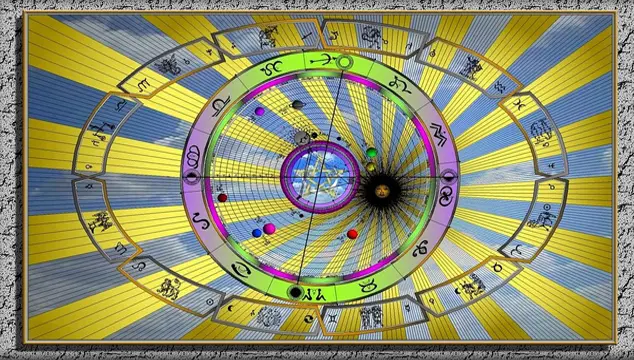Aspects Make the Astrology Chart About You
Aspects are the configurations between the planets and their angles in relationship to the earth. Once an aspect is formed the phenomena of what is called harmonics comes into play. The harmonics are fascinating.
The interesting part of understanding harmonics is the correlations to other metaphysical studies and fields of divination. Waves of energy feed into the aspects of the planets and the changing relationships that occur during individual paths of travel through the universe.
Two ways that aspects are used in astrology are in the initial birth chart, and as an ongoing indicator or everyday life effects.
Aspects are like colorations of different parts of the personality.
One planetary configuration that, when drawn in aspect, shows a very prominent placement juxtaposed from the majority of the others. Since it holds this placement, it has the power to modify traditional characteristics of the signs in a horoscope including the Sun sign.
Take, for instance, a panhandle configuration where the lead planet is a water sign. Say, in the cluster of placements on the other side of the wheel, fire signs are prominent. Naturally, the essence of the fire can be somewhat diminished.
Fire emits, and water receives. The authentic you lies in between the combination of events that were happening when you were born, not just the position of the Sun.
One interesting way to learn about the effects of the arrangement of planets in an astrological chart is to examine the chart of historically famous, or infamous figureheads.
The historical study of these individuals shows a spectrum of unusual groupings that go along with people like Albert Einstein, Marie Currie, or Gandhi. At the other end of the spectrum we may study people like Adolph Hitler, or Jack the Ripper.
Certain planetary positions occur very infrequently. These arrangements produce historically important individuals who change the world in profound ways.
The most common astrology chart analysis goes for the simple angles. These tell so much about an individual that no matter what your fate is, you are able to live your life as a self-actualized person. Knowledge of self is powerful.
The first step after determining the signs and planets of a natal or birth astrology chart is to look at the angular relationships of the different signs and where things were positioned in the night skies at that moment of birth.
The moon is viewed as a planet, and, traditionally, we consider nine planets in our solar system to be of the most influence.
The Basics
Difficult: Opposition and Square aspects
Easy: Conjunction Trine
Place no value judgment on these descriptions. Esoteric /spiritual astrologers often express that when there are no challenges such as presented by square or opposition, an individual may miss out on inward growth.
This theory references karma accrued during past lifetimes, and the belief that this lifetime is only one destination in the journey of the soul.
Could you be a big changer and affect thousands or millions of people? Were you born at that quintessential moment that the energies cast that certain, unique fate upon your being? The answer is yes.
If you don’t have a natal chart analysis, you can get one very easily on the web. Simply do it yourself with a guided step-by-step query of your birth information. The following URL takes you to a page where you can enter your information and get a free basic astrology chart.

The old and the new
Claudius Ptolemy, astronomer and astrologer, gets the credit for organizing the systems that contemporary astrologers use along with some added technology. Analysis of the movement of waves corresponds to polarities, which are also commonly used in modern households everyday.
Whenever an appliance is plugged in, these same types of polarities occur and are known as alternating current. More than this, there are many fields of divination that go by the same system.
For the purpose of astrology, here’s an example. Take Capricorn for instance. Imagine a line that crosses through the middle of a wave. Cancer represents the opposite half of Capricorn in this measurement of energy. Likewise, Capricorn and Cancer are polar opposites at either end, or top and bottom, if you will. This represents an opposition.
For detail, an astrologer may use these harmonics to the nth degree. But for the purposes of this astrology page, here are the basic angles, or aspects that determine the strength and nature of the connections throughout the astrology chart:
- One: Complete union, without the faculty of self-reflection
- Two: Polarity, complementarity, and conflict; also consciousness, which arises from self-reflection.
- Three: Balance, equilibrium, stability.
- Four: Resistance, matter. Two times two.
- Five: The number of humanity, signifying its strengths and powers and its creative and destructive potential
- Six: Two times three. Polarity plus equilibrium; activity needed to realize a balance.
- Seven: Otherworldliness, influences from beyond.
- Eight: Two times four. Polarity plus resistance.
- Nine: Three times three. End products, completion, the end of a cycle.
A few examples of how astrologers use the numerical aspects are: Three, the triangle, is stable because of its base. Four represents a square aspect in a birth chart or a relationship, and is considered difficult.
There’s still more. The ingredients that make up an astrology chart have just begun.
